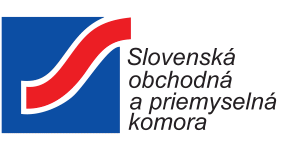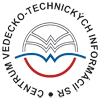Summary:
An Austrian R&D institute is developing a new technology aiming to quantify the haptic appearance of a product via its surface and material properties. The institute seeks partners to develop this technology and to use it profitably. The aim is to produce product surfaces with the desired haptics, to predict the haptics of new products and to evaluate new surfaces. Both virtual reality and artificial intelligence are used. The institute seeks partners for technical and/or research cooperation.
Description:
Nowadays products need to meet not only the aesthetical taste of the consumer concerning their optical appearance (Look) but also need to satisfy the demands of the consumer's sense of touch (Feel). This means firstly identifying and finding the ideal haptics (according to consumers' wishes) and in a second step creating a product surface that conveys the desired tactile or haptic sensation. This second step is often a complex process with an uncertain outcome.
The Austrian R&D institute is working to improve the current situation and to enable the production of surfaces with the desired haptics in a targeted manner. The institute has developed a technology that aims to completely identify and quantify the material and surface properties, which are responsible for the haptic appearance of product surfaces. The haptic sensation is evaluated via perception studies applying Virtual Reality (VR) methods, which put the samples into concrete use cases to simulate real applications. The interrelations between the recorded physical parameters and the haptic perception are identified via neural networks that build an understanding of this interplay. Once this is established, the system can predict the haptic appearance of new products and can be used to evaluate new surface variations. This represents an efficient and cost-effective option to test new surface variants as opposed to lengthy material testing or costly product dummies. With the experience gained, the system can even perform classifications in new, unknown data sets and predict expected results, again resulting in costing savings. To date the institute has been focused on plastics but is interested in a range of different materials such as glass, wood, textiles, leather etc. The artificial intelligence (AI) processes used by the institute can deal with all materials.
The R&D Institute has significant expertise in the necessary material testing and the topographical investigation of surfaces. A measurement set-up has been developed that allows high-quality recording of the prime physical factors influencing haptic perception. The measurements comprise friction, roughness, heat transfer, hardness, contact area, topography and the vibrations elicited in the human finger upon touching a surface. To support the experimental results and predict material behaviour Finite Element Method (FEM) simulations are applied.
The technology enables product developers to precisely determine how a product feels and which parameters would need to be changed to achieve the desired haptic appearance. Given that humans' sense of touch evokes feelings which in turn influence purchasing decisions, this technology can offer market advantage and is therefore applicable in a great variety of branches such as coating manufacturing, the automotive sector, consumer electronics, Fast Moving Consumer Goods and packaging to name a few.
The institute is looking for partners for technical cooperation or research cooperation. The partnership is envisaged such that prospective partners would deliver to the Austrian institute different materials/products whose surfaces need to be optimised. These products and/or surfaces would in turn be analysed by the research institute and feedback given as to how manufacturing processes need to be altered in order to optimise the products/surfaces.
Type (e.g. company, R&D institution…), field of industry and Role of Partner Sought:
The R&D Institute is looking for partner companies for technology and/or research cooperation in the field of haptics. The partner company should manufacture the specimen, which will be examined at the R&D institute in order to optimise the haptic appearance. The company is asked to change the manufacturing process according to the results from the R&D institute in order to create the right material and surface properties that give the desired haptic appearance. The objective is to optimise the haptics of the specimen in a targeted manner and to gain experience that allows the prediction of haptics of new products (based on the surface and material parameters) in addition to evaluation of new surface variations.
Technical Specification or Expertise Sought:
Partners are sought who develop and manufacture parts and items with challenging haptics or who supply materials or additives for such parts and items.
The partners must have the ability and flexibility to adapt manufacturing processes according to the recommendations from the R&D institute.
Ideal partners work in:
- plastics;
- soft-touch surfaces (for computers, cars, household appliances);
- leather and artificial leather;
- wood and artificial wood;
- packaging material (plastic, paper, etc.);
- coating manufacturing;
- surface additives manufacturing;
- furniture textiles;
- luxury goods (home wares and accessories).
External code:
TRAT20200421001








